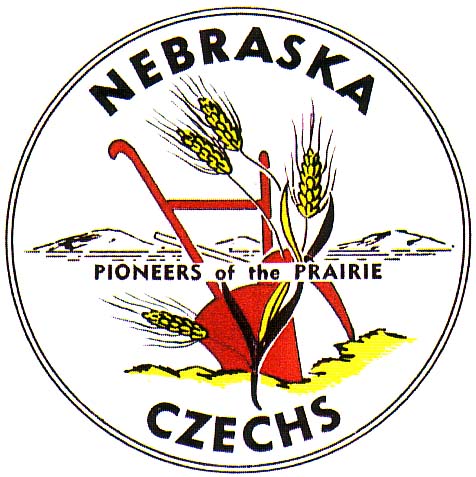
Christmas Ornaments
The Christmas tree represents a symbolic ladder to the heavens. As a result of this, ornaments are hung on the tree depending on what their symbolic position is in life. As an example, vegetables and fruits are closest to the earth. Therefore, they are hung on the lower third of the Christmas tree. Houses, churches, people and animals should be placed in the middle region of the tree. Birds, angels, moons and stars should hang from the middle of the tree to the top to symbolize their closeness to the heavens.
Angel: Represents the angel who appeared before Mary, asking her to be the mother of Jesus
Popcorn: Signifies the rope Joseph held as he led the donkey to Bethlehem
Walnuts: Are for the gifts from the three wise men
Oranges: A special fruit only available during the Christmas season
Wheat: A symbol of life, prosperity and nourishment
Cloth as the base of the tree: Represents Jesus’ swaddling clothes
Apples: Remind us of Adam and Eve
White dove: Placed near the top of the tree to evoke peace
Carrot: Often given to a new wife to bring good luck in the kitchen
Mushrooms: Considered to be lucky and mean good fortune is at hand
Pine cones and evergreen trees: Symbols of eternal life
Corn: Symbolizes prosperity, fertility
Pickle: Hidden on the Christmas tree
Whoever finds it first on Christmas morning, gets an extra gift left by St. Nicholas (Svaty Mikulas).
Houses and Churches: Symbols of village life
Farm Animals: Traditional symbols of everyday village life
Birds: Symbols of joy and cheerfulness
Swan: Symbol of gracefulness
Pineapple: Symbol of friendship and hospitality
Owl: Symbols of wisdom
Musical Instruments: Symbolizes the joy that music and singing brings during the Holiday season
Stars, Moons & Angels: Symbolizes the closest you can get to Heaven
During the Dark Ages, natives of remote northern Bohemia (present day Czech Republic) originated an art form in glassblowing, which not only holds a unique place in the 4000 year history of this ancient art, but has become a cherished part of Christian tradition. The Bohemians had learned his skill (a heritage of Egypt) from wandering Venetian tradesmen. They used it to create glass ornaments for adornment of the fir tree in their Yule celebration of the winter sun solstice. Early Christians adapted this custom of decorating the evergreen to their celebration of the birth of Christ, and thus the Christmas three was born. Down through the centuries, the glass blowers of Bohemia became famous throughout the world for their blown glass Christmas ornaments. The root of early glass blowers remained in Bohemia, where beautiful ornaments are still produced, using forms over 1000 years old.
Angel: Represents the angel who appeared before Mary, asking her to be the mother of Jesus
Popcorn: Signifies the rope Joseph held as he led the donkey to Bethlehem
Walnuts: Are for the gifts from the three wise men
Oranges: A special fruit only available during the Christmas season
Wheat: A symbol of life, prosperity and nourishment
Cloth as the base of the tree: Represents Jesus’ swaddling clothes
Apples: Remind us of Adam and Eve
White dove: Placed near the top of the tree to evoke peace
Carrot: Often given to a new wife to bring good luck in the kitchen
Mushrooms: Considered to be lucky and mean good fortune is at hand
Pine cones and evergreen trees: Symbols of eternal life
Corn: Symbolizes prosperity, fertility
Pickle: Hidden on the Christmas tree
Whoever finds it first on Christmas morning, gets an extra gift left by St. Nicholas (Svaty Mikulas).
Houses and Churches: Symbols of village life
Farm Animals: Traditional symbols of everyday village life
Birds: Symbols of joy and cheerfulness
Swan: Symbol of gracefulness
Pineapple: Symbol of friendship and hospitality
Owl: Symbols of wisdom
Musical Instruments: Symbolizes the joy that music and singing brings during the Holiday season
Stars, Moons & Angels: Symbolizes the closest you can get to Heaven
During the Dark Ages, natives of remote northern Bohemia (present day Czech Republic) originated an art form in glassblowing, which not only holds a unique place in the 4000 year history of this ancient art, but has become a cherished part of Christian tradition. The Bohemians had learned his skill (a heritage of Egypt) from wandering Venetian tradesmen. They used it to create glass ornaments for adornment of the fir tree in their Yule celebration of the winter sun solstice. Early Christians adapted this custom of decorating the evergreen to their celebration of the birth of Christ, and thus the Christmas three was born. Down through the centuries, the glass blowers of Bohemia became famous throughout the world for their blown glass Christmas ornaments. The root of early glass blowers remained in Bohemia, where beautiful ornaments are still produced, using forms over 1000 years old.
